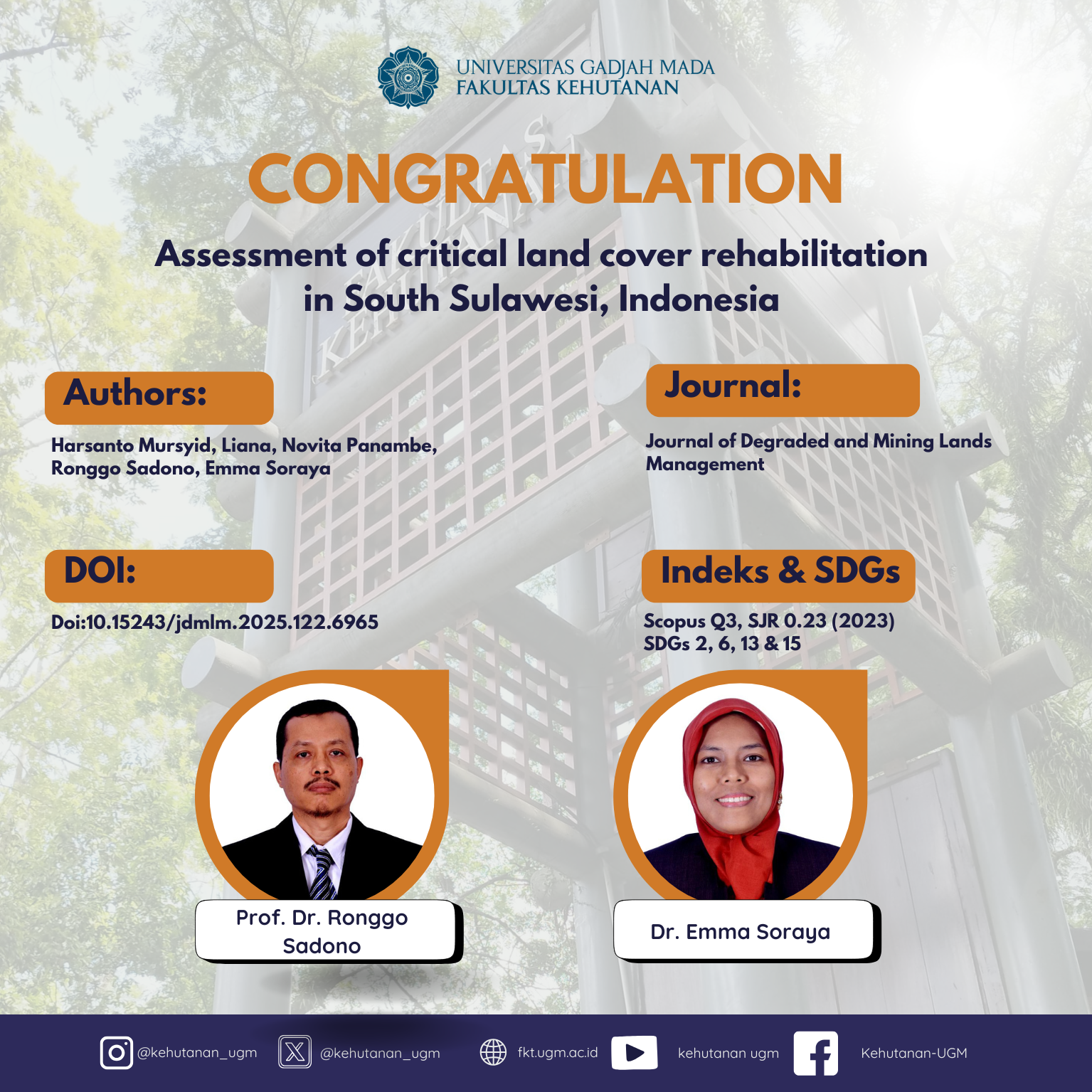
Abstract
The wide areas of critical land in Indonesia are attracting a high level of attention due to the significant influence of global warming. Addressing this issue requires several priority efforts, such as critical land rehabilitation programs. The level of critical land rehabilitation can be evaluated with remote sensing technology. Therefore, this research aimed to assess critical land in South Sulawesi rehabilitated by PT Vale Indonesia Tbk (PT VI) as compensation for mining nickel from the forest areas. The assessment was conducted in three villages across Luwu, namely Binturu, Lamasi, and Rante Alang. Successful critical land rehabilitation was determined by monitoring land cover changes (LCC) based on satellite data generated using Harmonized Sentinel-2 from 2019 to 2023. Furthermore, analysis was performed using the Google Earth Engine (GEE) platform with the Random Forest machine learning algorithm and correlation matrix. The result showed five LC classes, including high-density, low-density, shrubs, bare land, and buildings. Before rehabilitation in 2019-2020, non-forested LC in the three villages was only at a proportion of 23.41%, while forested LC reached 58.92% and increased to 80-95% in 2021-2023. Critical land rehabilitation in Luwu was considered a success due to increased LC at high- and low-density classes, along with declines in bareland and buildings. Additionally, an inverse correlation was detected between high- and low-density LC classes and buildings, barelands, and shrubs. Elevation in high- and low-density LC could significantly contribute to mitigating climate change.
SDGs:
SDG 2: Zero Hunger
SDG 6: Clean Water and Sanitation
SDG 13:Climate Action
SDG 15:Life on Land
Link Dokumen:
Download
